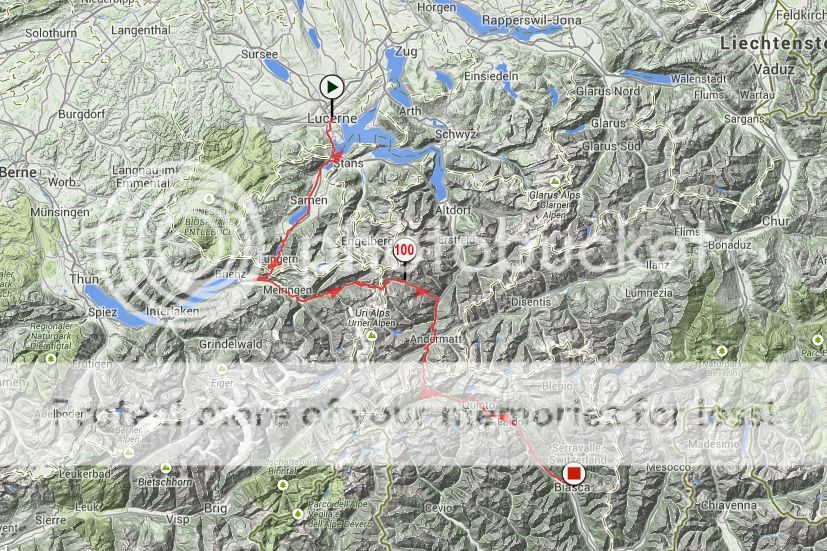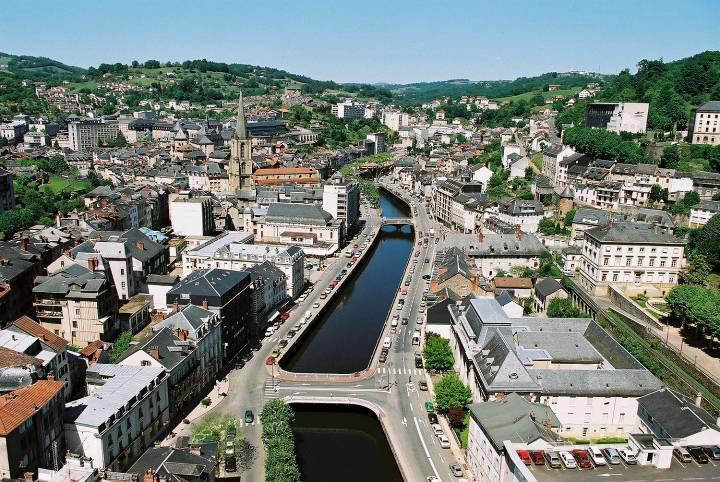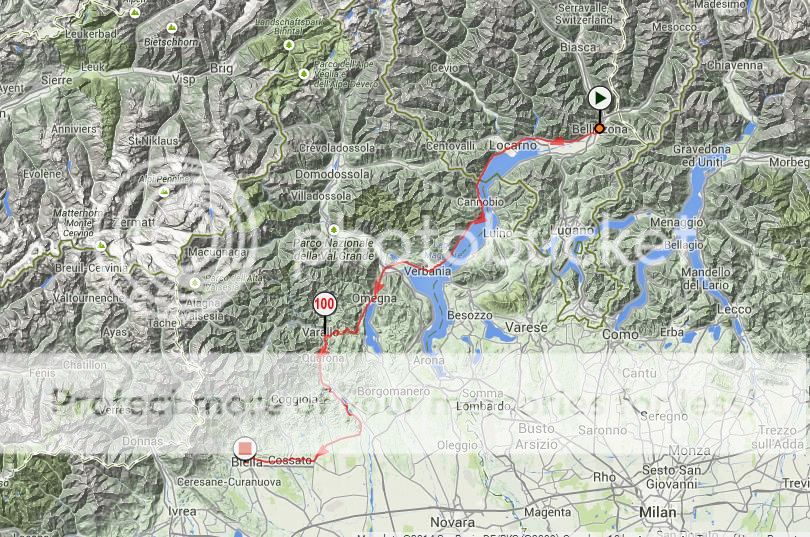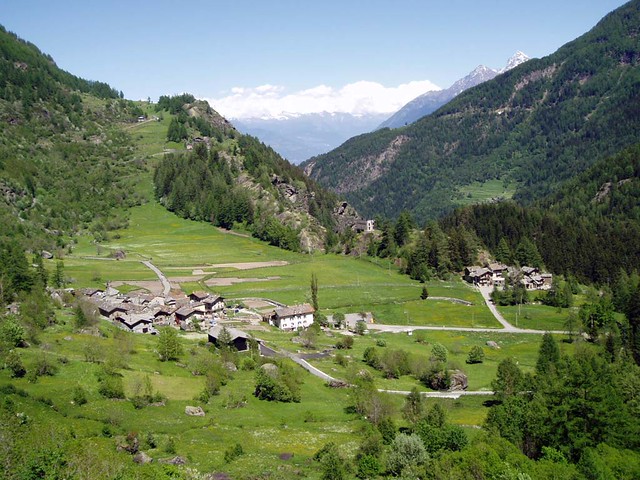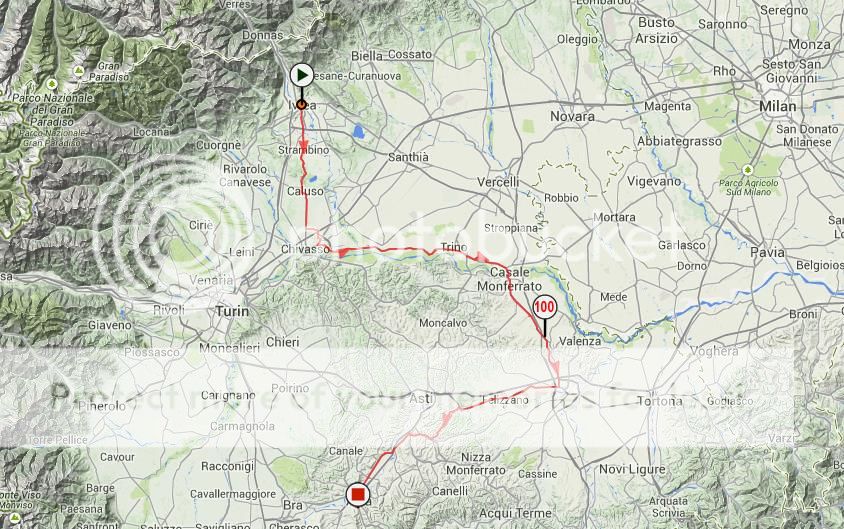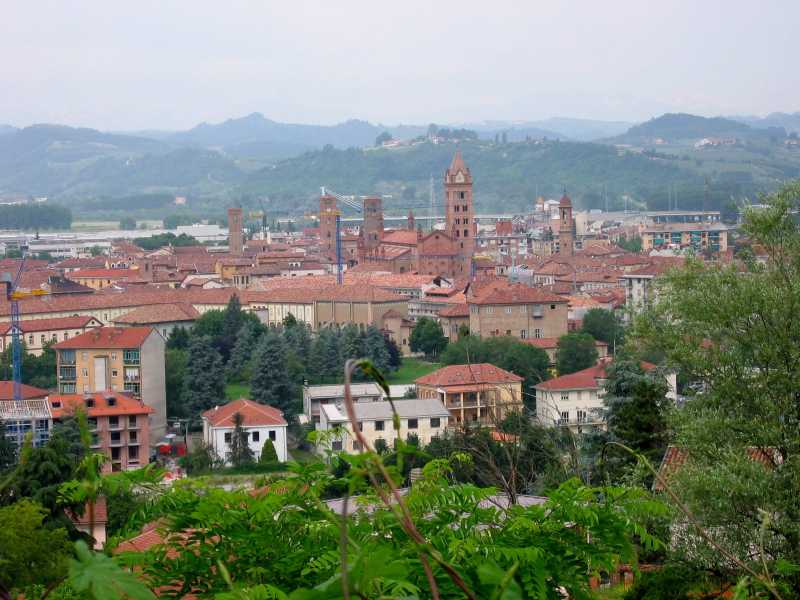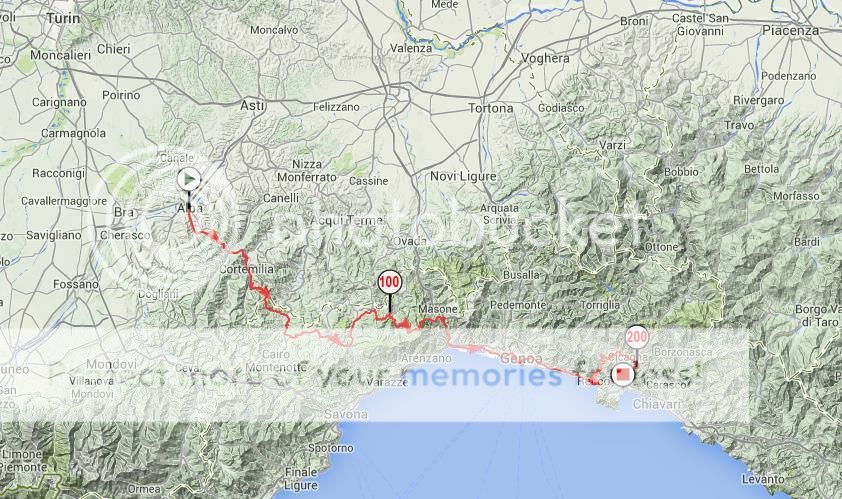Nice to see the Massif Centrale so early on in the race, makes a change from the usual flat first weeks and it's always nice to test the GC guys' form early on, as might be the case in the stage I'm just about to post.
____________________
When announcing my Giro, I forgot to tell you about my modifications to the rulebook! In an initiative I think might help make racing more interesting, riders will be awarded bonus seconds at KoM sprint points, as long as it's not a summit finish, via the following method:
Cima Coppi: 1st: 1'00''; 2nd: 30''; 3rd: 15''
1st category: 1st: 30''; 2nd: 15''; 3rd: 10''
2nd category: 1st: 15''; 2nd: 5''
3rd category: 1st: 10''
4th category: 1st: 5''
Play this right in the break and you could find yourself gaining a minute and a half on big mountain stages and hauling yourself back into a top 10 place or something like that. It will certainly make the early stages, like this one below, interesting.
Giro d'Italia Stage 3: Luzern (SUI) - Biasca (SUI) | 189km/147km
Climb details:
Passo Brünig (cat.3; 12.5km @ 4.1%)
Passo del Susten (cat.1; 27.7km @ 5.8%)
Passo del San Gottardo (cat.1; 8.6km @ 7.1%)
Altanca (cat.3; 4.8km @ 7.5%)
I know what you're thinking. In fact I can almost sense the disapproval you've already taken towards this stage for having 2000m passes near the
beginning of May, when they are closed to the public and probably covered in snow. But don't worry, everything is under control.
You see, I wanted mountains near the start of the race, and the passes in this part of Switzerland are simply too beautiful to waste. However, most of them are closed at the start of May, due to snow. So, my plan is to have something that I don't believe has been done before (and I can sort of see why, considering the headaches it would cause the organisers at the time of the race) and have a dual profile for the stage. The two profiles will be released, and, although the one posted above would be the preferred route, a decision would be taken nearer the time when there is sufficient knowledge about the weather as to which would be the best.

Here is the other profile by the way, travelling east from Lucerne as opposed to south, and then following the valley down to Andermatt, where it would merge with the original profile, tackling the St Gotthard pass, where the weather is likely to be slightly better. Of course if the weather is still terrible, and I mean truly terrible, the riders can take the Gotthard tunnel and the stage turns into more of a flat/hilly stage.
(Note: the funny bits at the start are tunnels which openrunner doesn't like, I have tried to blot out their hideousness from the profile, but haven't really succeeded)
Anyway, sticking with the original profile, I should give you some details of the route. We start out in Lucerne, the finishing town from yesterday, and head south into the Canton of Obwalden. We pass through the town of Sarnen, a stage finish town in this year's Tour de Suisse and then we reach the foot of the
Passo Brünig/Brünig Pass, the first categorised climb of the day. Although it is harder than the average gradient of 4.1% suggests, as it is a rather irregular climb, it still should not pose many problems. Riders will probably have time to admire more
pleasant views as they start the
descent. After roughly 10km of valley roads, passing through Meiringen, another recent Tour de Suisse venue, we arrive at the foot of the mighty Sustenpass at Innertkirchen. This, in my opinion, is one of the most beautiful climbs [adopt suitable Jeremy Clarkson voice] in the world. Just take a look at some of these breathtaking photographs
here,
here, and the view from the road of the spectacular Steingletscher near the top
here. Today we are climbing the
longer, shallower side - at just under 28km this is a real monster in terms of length, albeit at less than 6%. Topping out at 2224m makes it the second highest pass in this Giro (not telling you what the Cima Coppi is yet! But it's a close run thing...)
Aside from a couple of hairpins near the beginning, the
descent is not technical, and the riders will most probably reach some breathtaking speeds on their way down to the valley. However, there will be no time to rest and recuperate as the road starts to curve upwards as soon as they finish the descent, approaching Andermatt, a key town in the region connecting the Sustenpass, Furkapass, Oberalpass, and most importantly for the riders today, the Gotthard Pass. Today we will be climbing the
less-well-known and shorter side, there are only two hairpins on this side, unlike the
old road that goes up the other side. However, the riders will be spared this treachery, and instead descend the newer road, replete with hi-tech innovations like
bridges and tunnels. Having reached the town of Airolo, also the starting town of the ascent of the nearby Nufenen Pass, another of my favourite passes, we start to head south down the valley towards Italy, although there is one final sting in the tail, the 3rd category climb to Altanca. Nearly 5km of gradients averaging 7.5% will certainly not be welcomed by riders who have already tackled two huge passes. Passing yet another recent Tour de Suisse venue, this time 2013's starting town/village, Quinto; we descend gradually, giving some riders a chance to recuperate, down to the town of Biasca (still not back in Italy yet!) where we finish for the day.
All stops would have to be pulled out to make this stage go ahead, and it is guaranteed that there will be snow around, but if the race were placed under my jurisdiction it will take something worse than this year's Gavia/Stelvio conditions to force the riders to take the alternate route. If the stage does go ahead, despite the long descent at the end, it could be a truly epic stage with possibility of awful weather and riders peaking for the third week as is the custom these days struggling to hold on. It could be chaos out there, especially on the Sustenpass, and it would be so easy for a contender to 'lose' the Giro today, on just the third day of racing. Add to that the fact that if a rider crosses all the passes in first position today, they could receive 1'20'' in time bonifications, more than enough to offset any losses in the previous stages, meaning the peloton might be very careful about who is left to get away - we could perhaps see a situation where a break is not allowed to get away at all and we see the GC favourites coming out to play on the Sustenpass looking for those 30 seconds that may prove crucial later on in the race.
Biasca:








